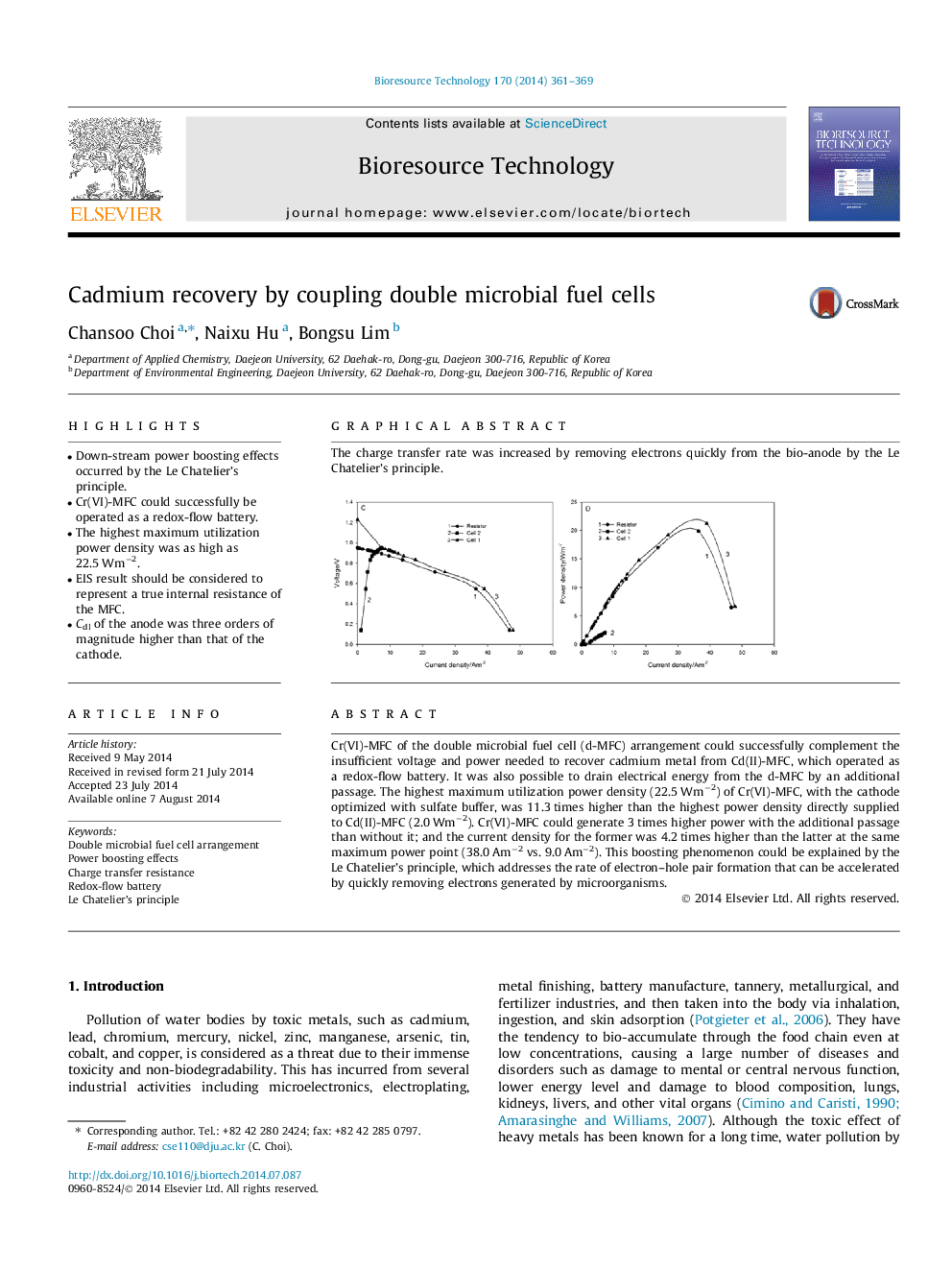| کد مقاله | کد نشریه | سال انتشار | مقاله انگلیسی | نسخه تمام متن |
|---|---|---|---|---|
| 680439 | 1459973 | 2014 | 9 صفحه PDF | دانلود رایگان |
• Down-stream power boosting effects occurred by the Le Chatelier’s principle.
• Cr(VI)-MFC could successfully be operated as a redox-flow battery.
• The highest maximum utilization power density was as high as 22.5 Wm−2.
• EIS result should be considered to represent a true internal resistance of the MFC.
• Cdl of the anode was three orders of magnitude higher than that of the cathode.
Cr(VI)-MFC of the double microbial fuel cell (d-MFC) arrangement could successfully complement the insufficient voltage and power needed to recover cadmium metal from Cd(II)-MFC, which operated as a redox-flow battery. It was also possible to drain electrical energy from the d-MFC by an additional passage. The highest maximum utilization power density (22.5 Wm−2) of Cr(VI)-MFC, with the cathode optimized with sulfate buffer, was 11.3 times higher than the highest power density directly supplied to Cd(II)-MFC (2.0 Wm−2). Cr(VI)-MFC could generate 3 times higher power with the additional passage than without it; and the current density for the former was 4.2 times higher than the latter at the same maximum power point (38.0 Am−2 vs. 9.0 Am−2). This boosting phenomenon could be explained by the Le Chatelier’s principle, which addresses the rate of electron–hole pair formation that can be accelerated by quickly removing electrons generated by microorganisms.
The charge transfer rate was increased by removing electrons quickly from the bio-anode by the Le Chatelier’s principle.Figure optionsDownload as PowerPoint slide
Journal: Bioresource Technology - Volume 170, October 2014, Pages 361–369
